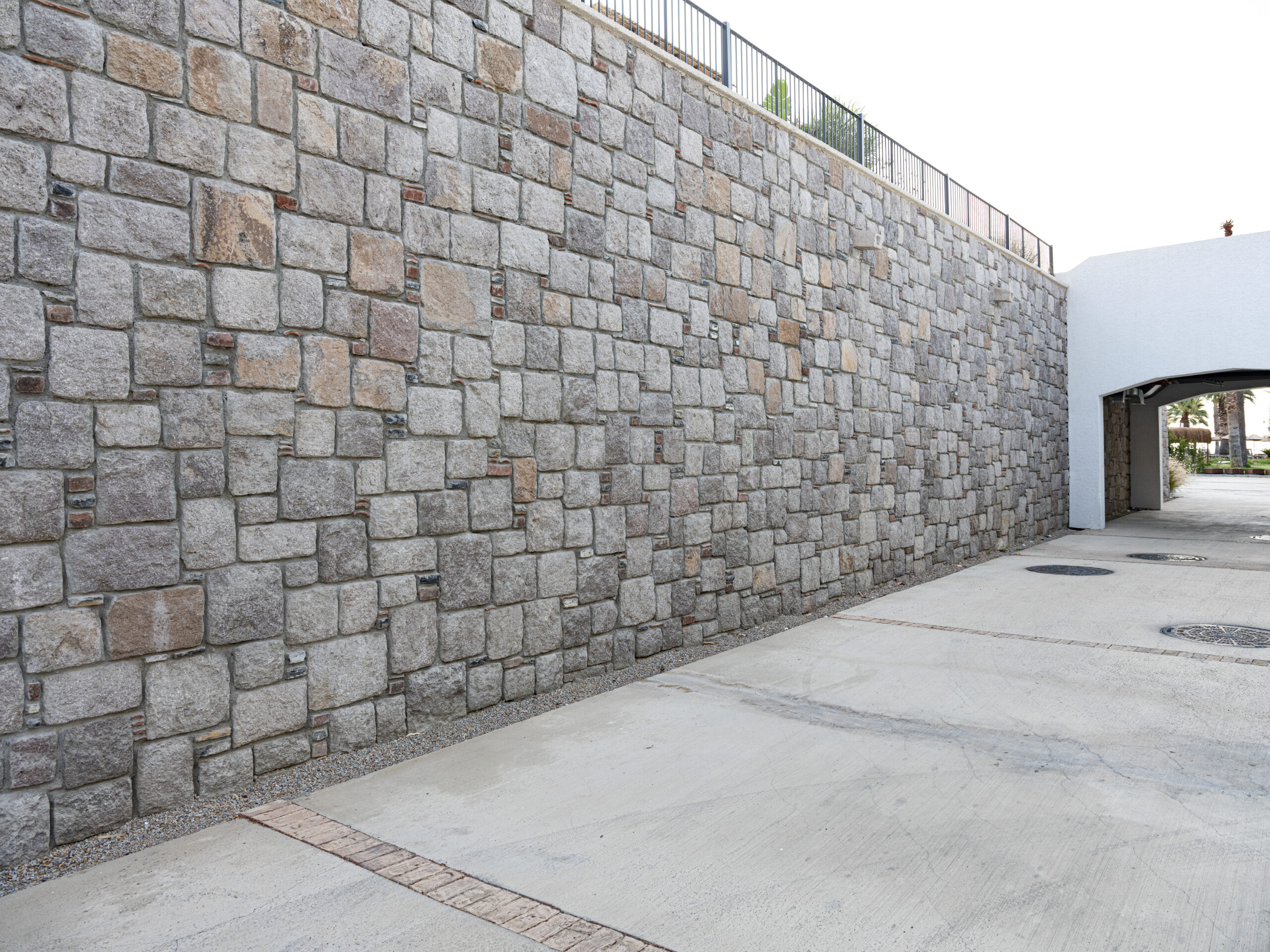Retaining Wall on Concrete Slab: Comprehensive Guide

Concrete blocks are fundamental materials in almost all types of structural formation, which is why they are widely used to build retaining walls on concrete slabs.
These retaining walls can be made of concrete blocks and are also known as retaining walls. Their purpose is to contain potential physical risks in construction.
To better understand how retaining walls work with the use of pavers, read the content to the end.
Understanding the Basics
Pavers
To define pavers well, we can say that they are precast pieces that can be fitted together to form a pavement.
The pieces are made of concrete and can have different shapes, colors, and textures, and can be used in various types of construction.
Concrete Slabs
As for concrete slabs, they are described as flat structural elements that receive most of the actions applied in a construction.
Concrete slabs are responsible for transmitting weight and pressure to the beams, and from the beams to the pillars. The most used in national works are those molded in situ and prefabricated.
Benefits of Using Pavers for Retaining Walls
Aesthetic Appeal
The use of pavers for retaining walls is a practical, beautiful, and sustainable option to add a touch of elegance and personality.
Concrete pavers are available in different colors, shapes, and sizes, allowing a variety of combinations and patterns, so it is possible to choose those that best match the style of your work. They also enhance the property and the environment, adding a touch of charm and sophistication.
Durability and Stability
The durability of the pavers is another advantage; they are resistant to any climatic changes, abrasion, and water infiltration, which ensures durability.
Pavers are a great option for concrete slabs, as they are permeable, i.e., they allow rainwater to pass through to the soil, preventing flooding and contributing to the preservation of water resources.
Pre-Installation Considerations
Selecting the Right Pavers
The right type of pavers to use in a retaining wall are concrete blocks, as this product is one of the easiest and cheapest to work with, as well as very safe.
Preparing the Concrete Slab
Then, the concrete should be poured over the forms and reinforcements, spreading it with a trowel or a metal ruler. The concrete should be compacted with an immersion vibrator to eliminate air bubbles and increase the slab’s strength.
Safety Measures
To start the project, it is necessary to have all the necessary safety equipment and materials to ensure that there will be no accidents on the job. Having a specialized team that knows how to correctly install the pavers prevents problems during and after the work.
Step-by-Step Installation Guide
Defining the Base
To ensure the quality and durability of the pavement, it is necessary to prepare and level the concrete slab properly. Before concreting the slab, it is necessary to compact the soil and put a layer of gravel to improve drainage and prevent infiltration.
It is necessary to assemble the forms and reinforcements of the slab, following the structural project. The forms must be leveled with a bubble level or a laser level, and the reinforcements must be fixed with annealed wire or welding.
Placing the First Line
After defining the concrete slab, the installation of the pavers can begin, which should be laid on a layer of sand or mortar, respecting the alignment, spacing, and desired pattern.
Stacking and Interlocking
The pavers should be compacted with a hand tamper or a vibrating plate, and the joints should be filled with sand or grout.
Sealing and Finishing
These are important steps to ensure the quality and durability of the structure. Sealing consists of applying a waterproofing product on the surface of the slab, preventing water penetration. The finishing is to smooth and give the desired aspect to the slab, which can be smooth, rough, non-slip, colored, or stamped, depending on the purpose and project of the slab.
Maintenance and Troubleshooting
Regular Checks
Maintaining the retaining wall will prevent structural problems, such as cracks, infiltrations, and corrosion of the reinforcement.
When identifying signs of damage such as cracks, stains, detachments, or wear, the repair can be done with mortar or suitable resin, following the manufacturer’s instructions.
Repair and Replacement
When identifying the need for repairs on the wall, check some maintenance that can be done:
- When identifying infiltration, apply a waterproofing agent, choosing the most suitable type for the environment. The waterproofing protects the slab against moisture and prevents the penetration of aggressive agents, such as acids, salts, and chlorides.
- If necessary, you can use a finish such as paint, ceramic, stone, or wood. The coating improves the appearance and increases its resistance to wear and abrasion.
- To keep it in good condition, perform periodic cleaning, using neutral products and water.
Calculating and Budgeting Your Project
To calculate a retaining wall project on a concrete slab with paver, it is important to follow some steps:
- You need to define the dimensions of the retaining wall, such as height, length, and thickness.
- Choose the type of block you will use to build the retaining wall.
- Calculate the number of blocks needed for the retaining wall. You can do this by dividing the wall area by the block area.
- Calculate the amount of gravel you will need for the wall’s backfill.
- Calculate the costs of your retaining wall project with paver.
Conclusion
As you can see, pavers are a great option to cover your retaining wall, with them it is possible to have safety and stability in your work, they also value the aesthetics and sustainability of your project.
If you are interested in using pavers on your retaining wall, contact our company and request a quote. We have the best prices and conditions in the market, as well as a qualified and experienced team to carry out your work with quality and efficiency.






